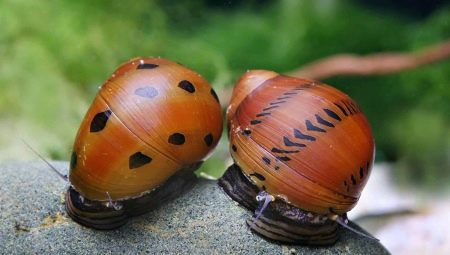Passion for snails, and even more so the maintenance of their home - is an exotic hobby, which has a lot of advantages. These unique mollusks bring nature, beauty and tranquility to the house. Of course, they will not greet you with a flood of joy and joyful barking or with the critical and mocking voice of a colorful parrot. However, they can and can be silent, unhurried, grateful and worthy friends. Mollusks are able to recognize their caring owners and be grateful to them.
Wherein snails are extremely unpretentious in care, which does not take much time and does not require much effort. For people who value time, working in hard mode, a meeting with snails at home is minutes of rest, relaxation, enjoying the beauty, grace and unusualness of these animals. Time in communication with them stops!

general characteristics
The snail (Gastropoda) is a representative of a large and diverse group related to gastropods. Their huge variety is reflected both in the form of snails and their preferences, and in their habitats. To date, approximately 60,000 species of these animals, which represent approximately 80% of mollusks, are officially described. Expert figures of existing organisms range from 40-100 thousand species. Up to 13 thousand names of genera of snails are known, both living and fossil.
Gastropods occupy a significant place in biological research, being the object of complex scientific experiments in the fields of biomechanics, ecology, physiology. Their behavioral patterns are being actively studied, including from the standpoint of the evolution of natural organisms.
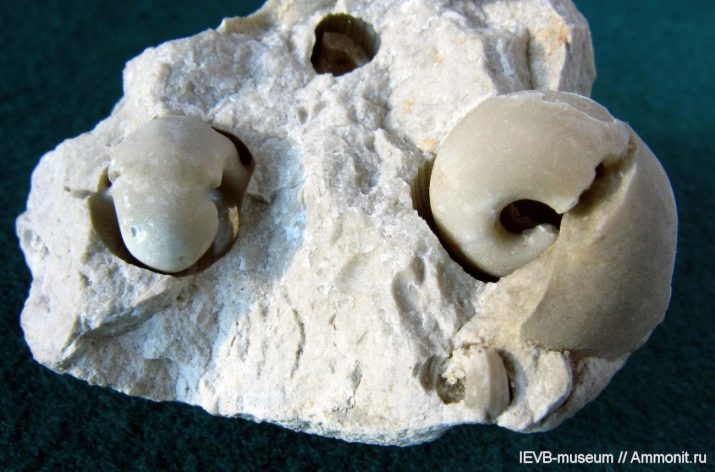
They are characterized by the presence of one (often folded) outer shell and body (mollusks without shells are called slugs).
The body of the animal includes the head and leg. A special mantle fold covers his body. The head is developed, with head tentacles and eyes located in the region of the base of the tentacles. In certain species, the organs of vision are located on special eye stems. A large leg compared to the body of a snail is suitable for crawling, but can be modified for jumping, swimming or clamping.
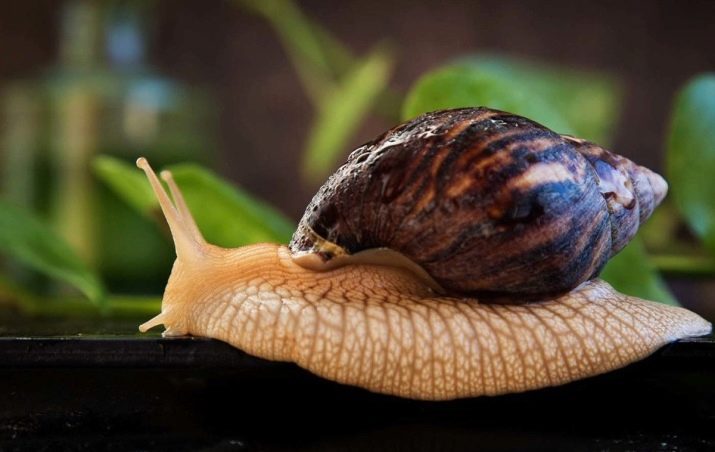
Anatomical features
Exclusively all organs of gastropodia are unique both in their structure and functionally. It is safe to say that there are no analogues among animals, at least among representatives of domestic fauna.
Sink
The sink is the oldest shelter for an animal that is millions of years old. For thousands of years, wise nature has honed and perfected the spiral shape of the snail's dwelling. Constructively and in shape, the shells are rational and comfortable for animals; they are light, durable and do not interfere with the movement of snails. At the same time, their shells significantly vary within species, whose structure is highly dependent on the habitat.
So, Popular Achatina have a sophisticated and translucent shell. Gastropods living in a less humid environment have a harder and stronger shell. Organisms living in hot climates have a light shell color (reflectivity), while their northern counterparts use darker colors.
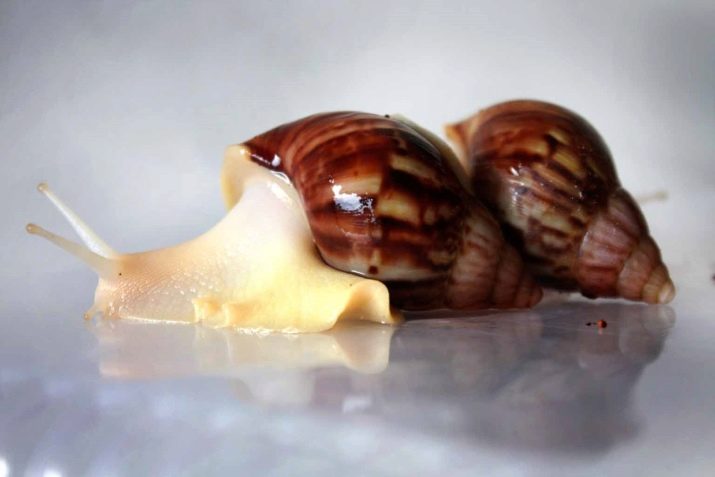
Regardless of the species of mollusks, shells perform a number of vital functions for them:
- protect the body from dehydration (drying out);
- protect from enemies;
- protect the body from injury.
Various drawings on the sinks and their coloring are one of the mysterious aspects of the life of gastropods. There are only hypotheses regarding this issue. It is still unclear why snails living in almost identical conditions, with the same diet, under the same lighting and humidity conditions, have such a variety of shells. Some are striking in their brightness and complexity of the picture, others are completely monotonous and inexpressive.

The presence of teeth
The snail's mouth (radula) is not quite ordinary and represents a fine grater (small “teeth” number up to 25,000 units), adapted for grinding food. In fact, this is one, but a large tooth, characterized by unusual sharpness. Such an improved chitin grater allows you to remove and grind small particles from various surfaces and use them as food. In other words, the radula performs two functions - scraping and chewing.
A snail bite is quite real, but it is safe for humans if the snail is not poisonous. A person with such a bite feels a slight tingling.
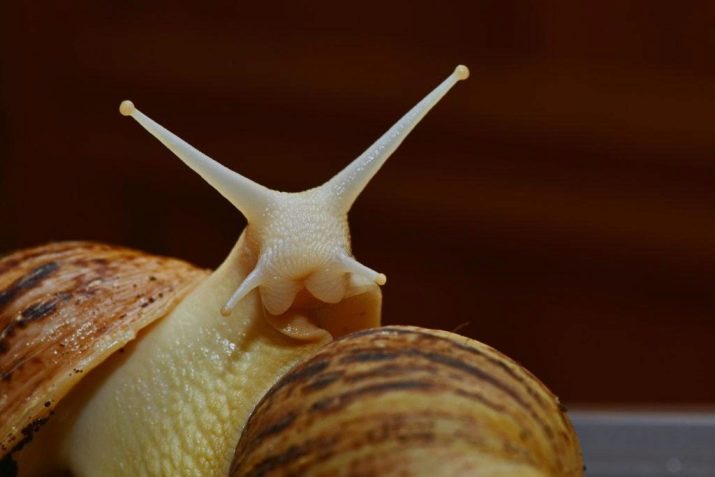
Sensory organs
Despite the small size and apparent primitiveness of the body, the structure of gastropods is complex, including the organs responsible for balance, touch, smell and vision.
The eyes are located on the ends of the "horns" and represent the "eye bubble" - a special protrusion of the skin. The eye has a lens (spherical lens), to the surface of which the optic nerve is attached. The front wall of the eye sphere is transparent, and its other sides are pigmented.
Thanks to such unusual eyes, mollusks not only evaluate the brightness of the light, but also see at a distance of 1 cm.
It is amazing that gastropods feel light rays not only visually, but also by the body, where special light-receiving cells are located - snails are extremely susceptible to bright lighting.
Therefore, mollusks are more active in the evenings and nights. It is important to take this feature into account when keeping them, without turning their abode into a hot and sunny beach.
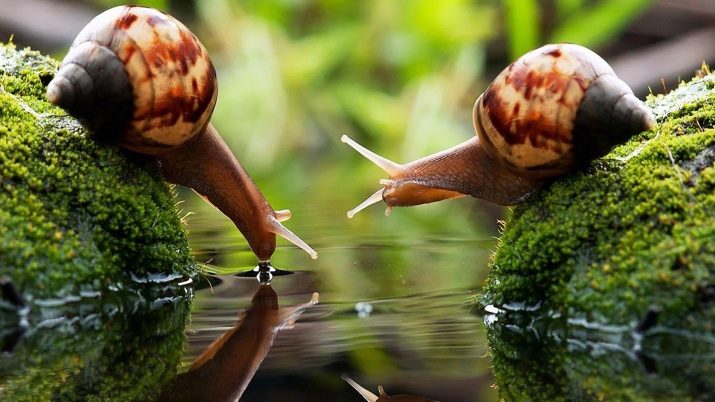
That is why, given that although mollusks need heating lamps that maintain the required temperature regime in the mollusk (otherwise they hibernate), a special screening is extremely urgent, behind which the snails could hide. Otherwise, they burrow into the ground for a long time.
The second pair of horns of smaller gastropods is designed to touch and smell. In addition, she is responsible for the so-called "chemical feeling" - the distinction between odors of substances of artificial origin (alcohol, acetone, gasoline and others). These "aromas" of the snail can be felt at a distance of 4 cm. That is, this quality is better developed in them than vision.
It is interesting that snail skin areas located in the area of the respiratory integument, head, frontal surface of the body, and at the edge of the leg have the same feeling.
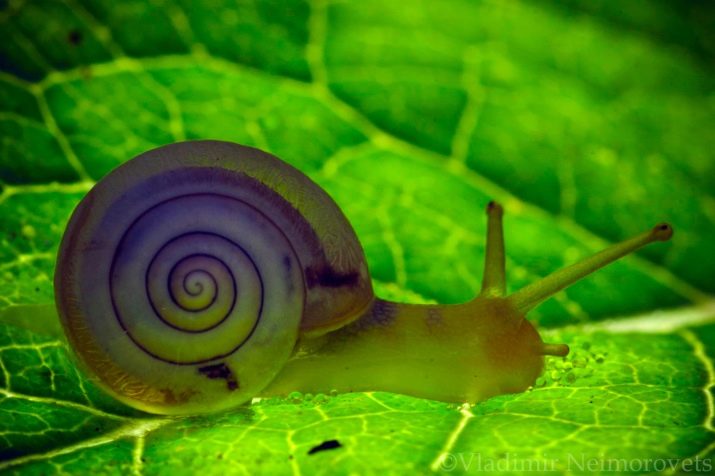
As for the smell of snails, it is truly phenomenal. So, gastropods can feel a cabbage leaf or a fragment of a melon at a distance of 50 cm, and smells of wood remains or pretty leaves are caught at a distance of two or more meters.
If you open the lid of the snail's abode and make a noise over it, then the mollusks will not react in any way - they have no hearing.
Snails that are in the water breathe with gills and oxygen dissolved in it. Other species use a lung located in a special pocket of the mantle for breathing, the walls of which are saturated with many blood vessels.
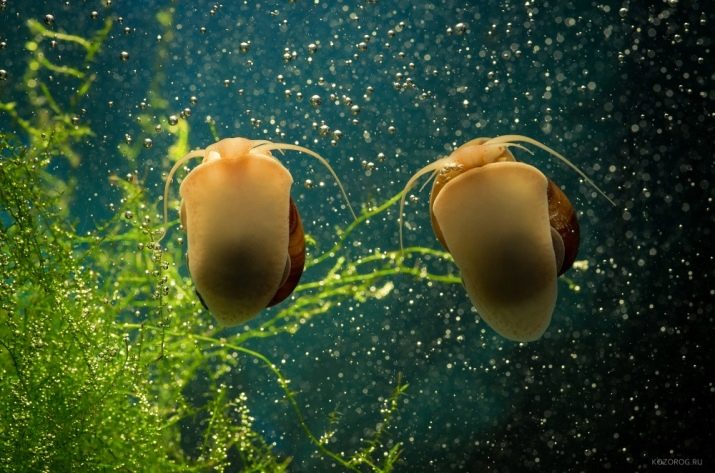
Varieties
According to their habitat, all gastropods are divided into land, freshwater and marine, and by type of breathing, they are divided into breathing lungs and gills. Below are examples of some popular varieties of aquarium mollusks that fond natures keep in domestic mollusks. Types of domestic mollusks are extremely diverse. Among them, there are both large and small, but are found, by snail standards, huge. The originality and unusual names of these animals are due to the diversity of their species, color and structure.
- Pokemon There are other names - radix or tropical pond. Pokemon is a fellow of the common pond. Native habitats are located in Malaysia and Indonesia (on Borneo). They live in ponds and swamps. Life expectancy in aquariums is up to a year.
Pokémon eat algae and are able to eliminate their blue-green species. They like to eat ripe leaves, as well as scrape the walls. Actively destroy bacterial growths and formations. They are indifferent to aquarium plants. The characteristics of the water for their content are similar to the tropical regime: To = 22-28 °, pH 6-8, kH 3-8, dH 8-10.
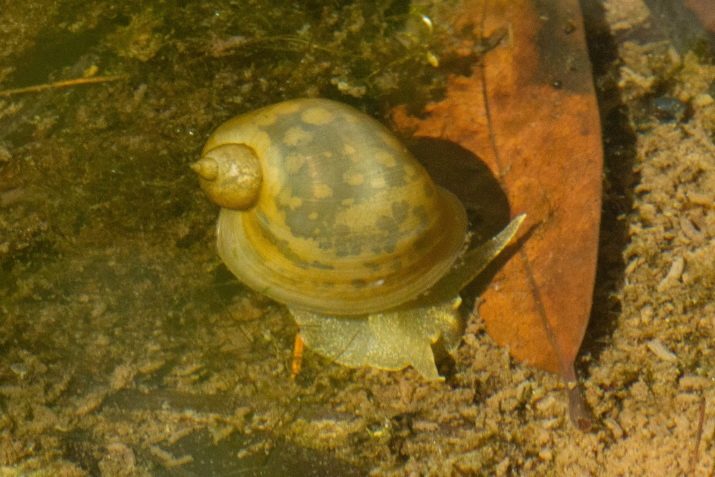
- Horned snails (beeline). Their habitat is located in South Africa. Reach a value of 1.5 cm. Live from 3 to 5 years. On the sink they have randomly located growths that occasionally break off without harming the animal’s health. In content, these gastropods are simple, perfectly adapt to life in containers of various volumes. To maintain the tone of these mollusks, water with an acidity of at least 7 units and a hardness of at least 10-13 is recommended. If these parameters are violated, the mollusk shells begin to crumble, which is fraught with their death. These animals are able to tolerate cool water, while the level of their activity drops markedly. For good animal activity, the temperature regime of water should be observed at least 24 ° C.

- Spiksi (elf) lives in reservoirs located in the south of America. The shell is light in color with stripes, has an oval and slightly narrowed shape with a diameter of 2-3 cm. The body of the mollusk is spotty, slightly darker than the shell, may be yellow or brownish in color. Lives about 5 years. Included in the ampullar family. It differs from ordinary ampullarium:
- elongated mustache;
- the absence of a special breathing tube-siphon;
- higher speed;
- behavior: during the day they hide in the ground, and masonry is done under water, while ordinary ampoules prefer to do this over water.
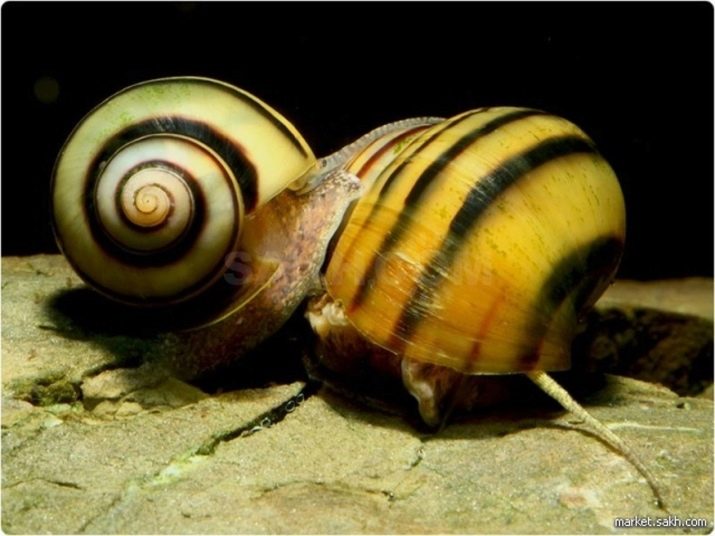
- Ampullaria - a yellow snail, known among many aquarists. These mollusks can be kept in an aquarium with fish, since they quite get along with many of their species. It is important to know that some fish are not averse to patting the mollusks for their antennae, and some can enjoy this delicacy with pleasure. Therefore, we advise you to keep an ampoule with peaceful species of fish, and in case of doubt consult a specialist. These mollusks do not get along with gouras, tetradons, aggressive American and African cichlids, as well as with other labyrinth fish.
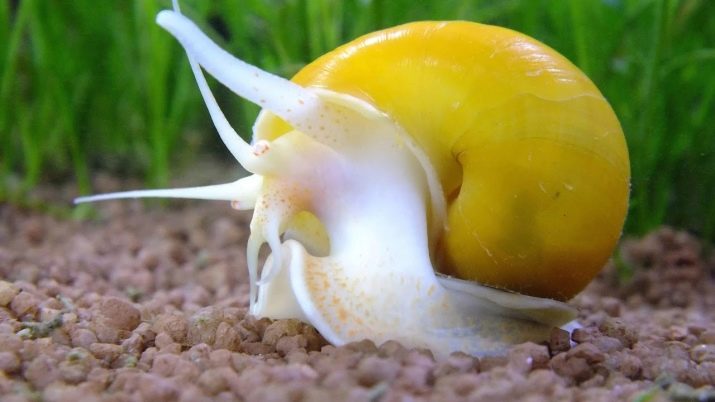
- Kauri (cypreids) or porcelain snailslive in tropical reservoirs, and some species have chosen the Mediterranean Sea. They are distinguished by a variety of colors and special figures of drawings. They feed on seaweed. They live in the clefts of dead coral fragments, burrow into the ground, but on a new moon or full moon they are selected and moved along the rocks. Interestingly, certain species of the family were used in antiquity as money and fragments for decorating funerary masks.
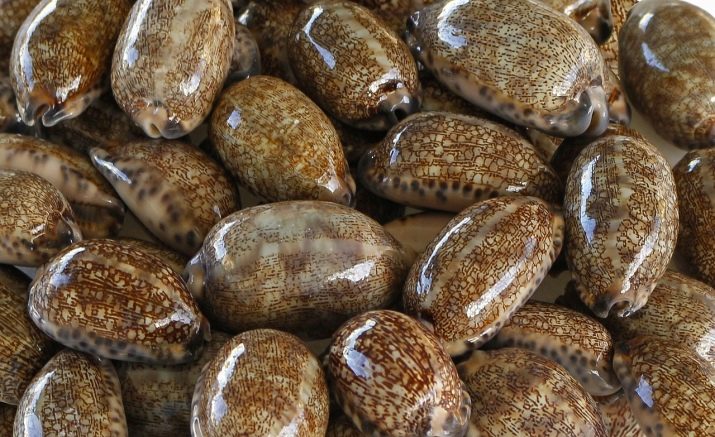
- Zebra snail (Neretina) - The most popular clam found in many lovers. The shell of a mature snail is 2-2.3 mm high and has a diameter of 1.9-2.3 mm. Zebra snail - animals of different sexes, but according to external signs to identify a female or male is quite difficult. The reproductive organ of the male can only be seen during copulation, it is located near the right eye. The outer contour of the mollusk shell is S-shaped, and its body is usually light gray or yellow in color. The color of the shell varies from greenish yellow to yellow with brown hues. Patterns with ornate, medium width black stripes starting from the beginning of the curl and gradually expanding downward. The drawings on the shells are extremely diverse - there are no snails with identical patterns.
The beautiful and contrasting color of these mollusks attracts many aquarists, as their golden-black carapace blends wonderfully with the green background of the aquarium plants.

- Tylomelania (Tylomelania) or orange rabbit. Faced with this unusual clam, many lovers admire the diversity of its species, which, by the way, are little studied and not all are described. The appearance of tylomelania largely depends on their habitat. Two types of tilomelania are distinguished: those living in the aquatic system (Malili) with ribbed carapace and living in lake-river systems (Poso) with rich colors. In all these animals, the shells are 2–12 cm in size and have a conical shape. Body color varies in spectrum from bright orange to dark with white specks. Nature thoroughly took care of the safety of tilomelanings - due to the unusual color, they are almost invisible among rock formations, and especially the flashy coloring can frighten off a predator.

- Achatina - The largest and most popular of domestic snails. They are also called giant African mollusks. There are individuals with a shell longer than 20 cm, the body of the animal can be more than 30 cm. Of course, for such large animals you need to purchase a spacious dwelling, the smallest volume for them is a 10-liter aquarium. Achatins like to swim, so the appropriate capacity for this is simply necessary. The thickness of the filler layer should be 4-6 cm - the mollusks love to dig there. As a rule, their body is painted in grayish-brown color, and the shell has a spiral shape with reddish-brown stripes. Achatina albinos are not uncommon, their patterns look more contrast, the body has milky white shades.
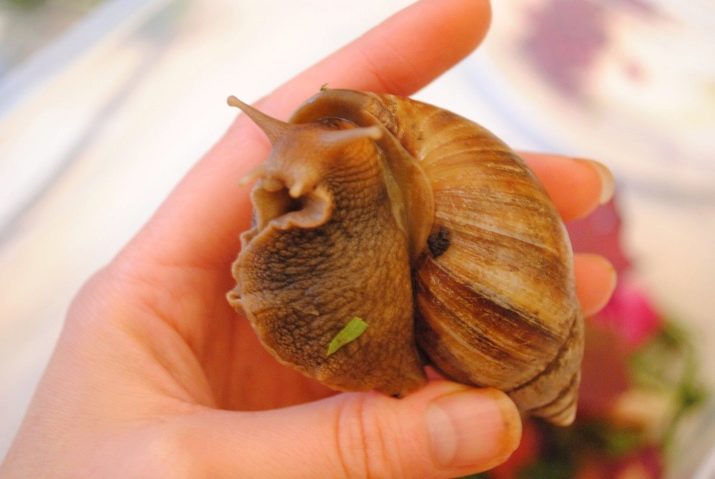
These wonderful animals are used in beneficial cosmetic procedures. So, exotic massage is magnificent when Achatina move on the client's face. The secret of these snails is useful, moisturizing, nourishing and anti-inflammatory effect on the skin of the face.
Achatina become sexually mature in the period from 6 to 18 months. Despite their sexual universalism (hermaphroditism), self-fertilization is a rare episode in the life of these animals and usually can not do without a mating partner. Achatina retains partner sperm for up to 2 years and is able to produce masonry 5-6 times a year.
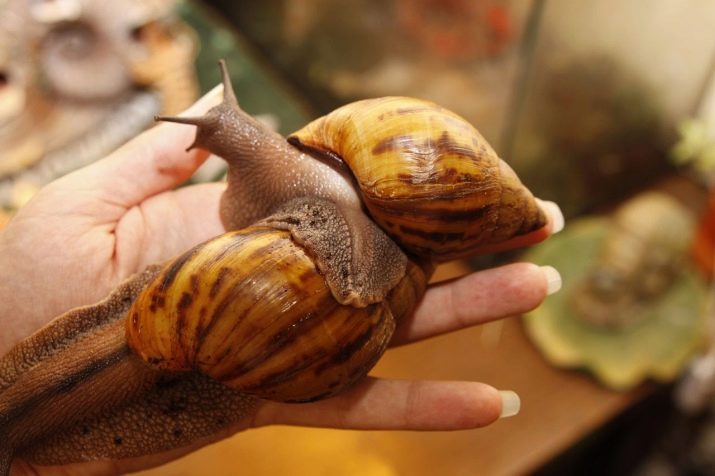
- Often, snail hunters acquire caracolusoin - wood mollusks from Cuba, with brightly colored shells of amazing shape, similar to a saucer. These snail saucers live in small flocks of up to 5-7 individuals. Their dwellings must be supplied with twigs and snags.
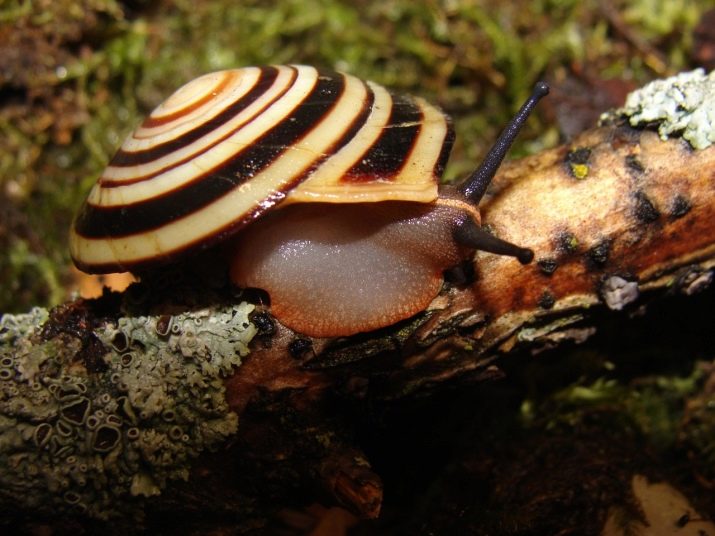
- Extremely fascinating objects of observation are groups of small land mollusks - octon subbulins. These animals are extremely unpretentious, and their colonies take up little space. Subbulins multiply rapidly and are small in size - 3-5 cm.
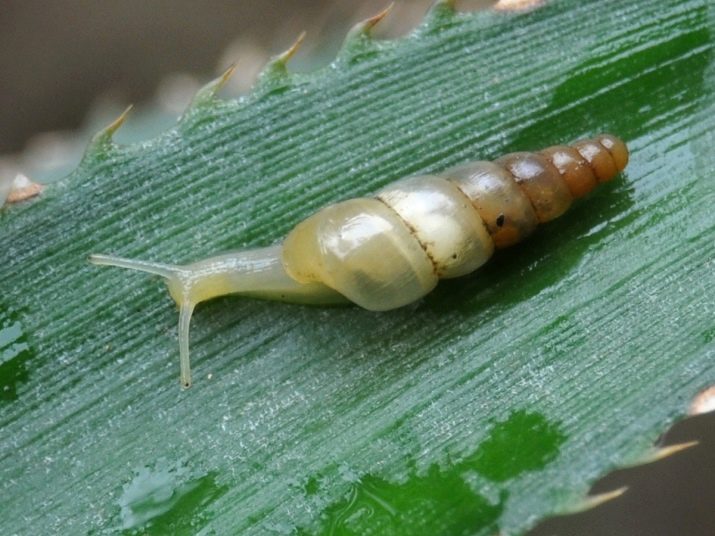
Very popular among lovers are ordinary grape snails. Since they are rare in retail chains, they are simply found on the street.
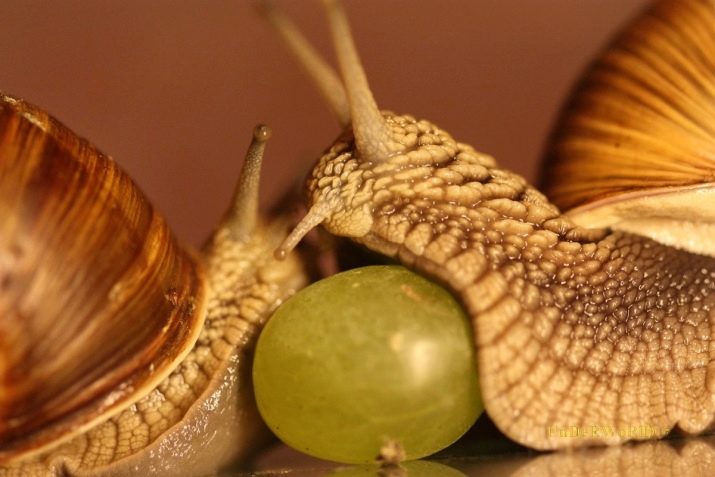
Growing conditions
Caring for exotic pets does not require much time and financial effort, and wildlife will be nearby, delighting with its beauty and naturalness. This advantage is perhaps the leading one when choosing a hobby. The snail care scheme is simple:
- feeding three times a week;
- washing the home once every 2 weeks;
- litter change - once every 4 weeks.
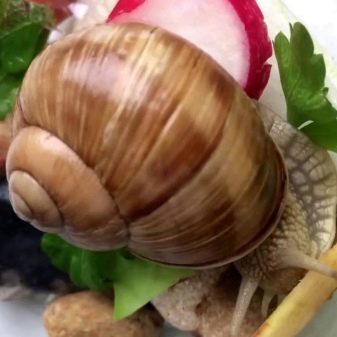
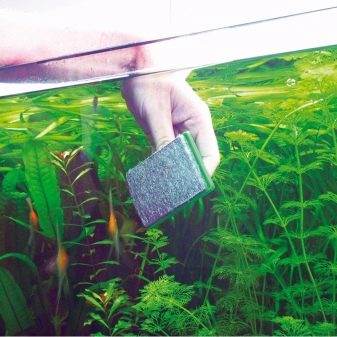
In terms of nutrition, snails are very unpretentious. Their usual menu includes slices of fruits, vegetables and herbs. Remains of products from the refrigerator are also quite suitable. The true delicacy for them are lettuce.
The utilitarian is equipped with a special cover with small holes or a narrow gap, otherwise the animals may suffocate or crawl out of the abode. The role of the litter is usually performed by various substrates or the special “Begonia” soil. The utilitarius is also spread with moss, adding lichen branches there or planting cat grass. Necessary in the aquarium and a kind of reservoir - a small tank with water. Sphagnum moss for lining, collected in the forest, must be prepared - cleaned and subjected to special treatment.
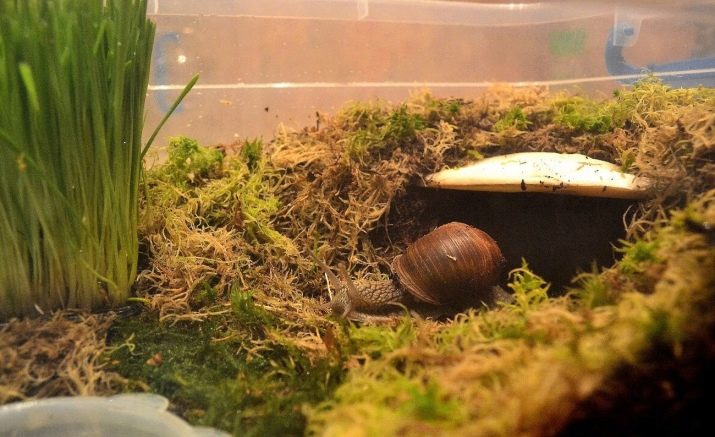
It is recommended that you regularly (2 times a day) take care of the soil, moisturizing it and the surface of the ulitar with a spray gun. If the snails are constantly settled on the walls, then this indicates an excess of water in the soil, the animals feel discomfort. With a moisture deficit, snails, on the contrary, are locked in their house.
With proper care, the activity of snails increases, the dependence here is direct. Usually in their mode, activity dominates at night, during the day they freeze on glass or hide in the ground.

Sometimes mollusks go into hibernation and not necessarily in the winter. The causes of falling asleep can be reduced humidity in the monastery, a deficiency of the useful components of the diet, stressful reactions and injuries. In these cases, the pets hide, clogging the inlet to the house with a special sticky compound, forming a special film (epiphage).
You can revive the gastropody by pouring it with warm boiled water, but it is better to just place it in the ulitar with optimal microclimatic conditions, sprinkling slightly on it. After a while, when the environment becomes more favorable for her, the mollusk will appear from its shelter.
Propagation of gastropodia and caring for their eggs is not difficult even for beginners in coral breeding. The main thing here is maintaining the desired temperature regime in the street (28 degrees) and a calm atmosphere.
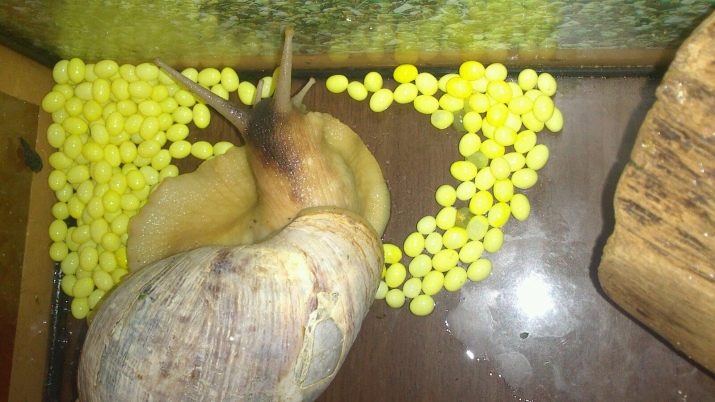
Baby nutrition includes solid foods. It is important that they do not burrow and cannot suffocate. A good option for them is a litter of lettuce leaves, and grated greens and carrots are quite suitable for food. It is not worth accustoming the cubs to the cucumber menu - they are far from indifferent to this vegetable, very soon they get used to it, refusing other food.
In this way, keeping mollusks at home is absolutely not burdensome, but the main problem will be the task of putting the newborns in caring and masterful hands.
Often, gastropodia eggs end up in aquariums with bedding or plants. It is important to preserve their number and strive to ensure that such youngsters from casual guests become assistant aquarists.
Snails kept with fish need no special care, since they pick up pieces of food after fish, both waste and algae are used. It is advisable to constantly monitor their number - for 5-6 liters of water contain one large or 2 small snails.
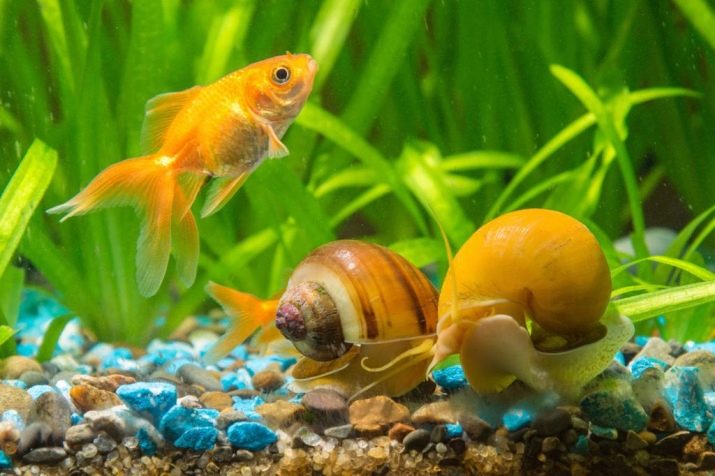
The order of maintenance of Achatina is also suitable for the care of other gastropods. In the feed for them, you should choose a grape leaf, leaves of dandelions and burdock, as well as vegetable residues. Ordinary, not quite exotic gastropodia are no less interesting objects for observation than their foreign counterparts.
Important! If the shells of all mollusks in ulitari are dull, this indicates a poor diet of gastropods and a lack of any useful components in their diet.
Chips found by you on snail shells are not recommended to be aligned with your own hands. In this case, the animal should be placed on a damp napkin, and it will independently repair its house. Often, such defects nevertheless remain in the form of subtle shell irregularities.
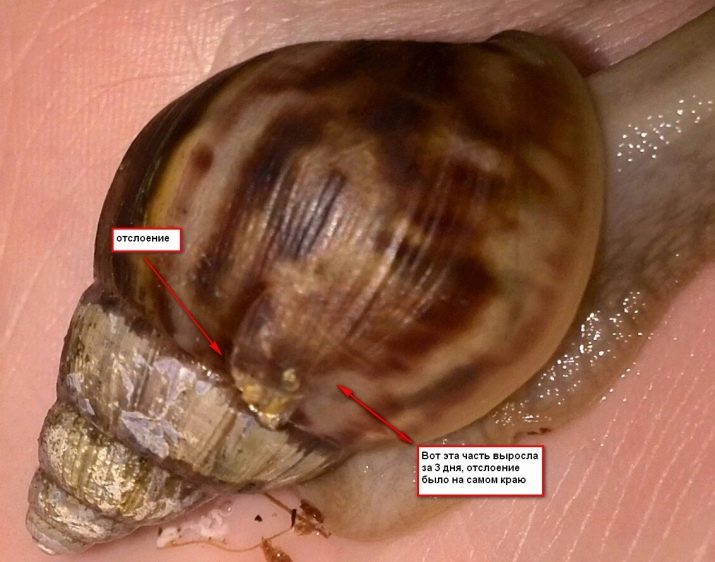
We will consider the rules of feeding on the example of the well-known Achatina. To feed the mollusks means to provide variety in their food, which is often served in solid form. It is important to control the animal's diet for sufficient calcium components in it, which are essential for the construction of the shell and the preservation of the most important organ - the chitinous tooth.
A sample snail menu consists of pieces:
- tomatoes, cabbage, lettuce, boiled potatoes, pumpkin;
- apples, pears, bananas, plums, grapes, melons, watermelons;
- legumes;
- oat flakes;
- mushrooms;
- grass and leaves, dandelion flowers, clover;
- ground peanuts;
- dairy and dairy products;
- soft bread;
- minced meat (boiled);
- boiled eggs;
- bone meal;
- combined feed.
Prohibited Products:
- citrus;
- all spicy, salty, sweet, sour, toasted and smoked;
- pasta;
- potato eyes.

House decoration
After selecting a suitable street sign, it is not recommended to immediately place animals in a new dwelling. First you need to properly equip its internal space so that newcomers do not get stress from such an update. The specified arrangement includes a number of events.
- Organization of proper ventilation. Without an influx of fresh air, new settlers may not survive, and harmful bacteria will appear in the ulitar. For proper ventilation, it is important that the holes in the lid and other elements of the home are located in a certain order. They are made in the lid and in the upper part of the container, on one of the walls, as well as in its lower surface. This order provides a more complete circulation of air and litter and the total space of the snail's dwelling.
- Litter selection. The bedding layer provides comfort and warmth in the new home. It can serve as substrates, forest mosses, leaf litter, peat, driftwood and other objects.
- Ensuring optimal temperature and humidity. It is important to install housing away from open windows, heating batteries and outside hot rooms. Suitable temperature is 24-27 degrees, and humidity is 70%. In order to exercise control over the parameters, heating mats, thermometers, special sensors are used. They are very convenient to use.
- Saucer with water for snails should always be close to the mollusks - this is an integral element in the arrangement of the ulitar. At the same time, the liquid level in the container should not exceed 1 cm so that the cubs and mature individuals do not choke and drown. The drinker is chosen to the taste of the owner.
- Settling snails in a new home. On the first day it is important to constantly and carefully monitor sensitive pets in order to timely come to their aid. If the Achatina you don’t like the house prepared by you, they will go into hibernation for a long time.
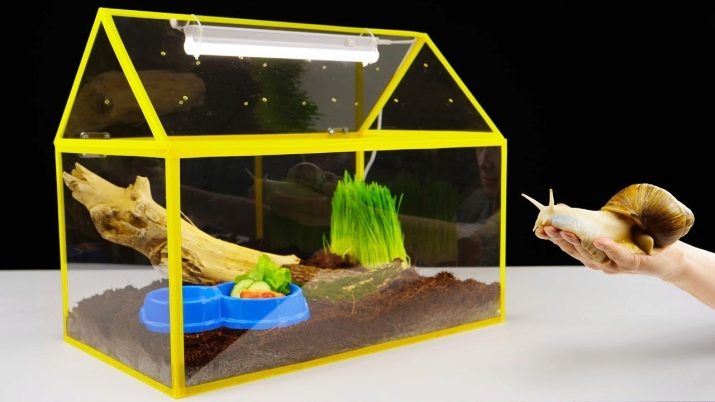
It is advisable that a new home for the mollusks be made and decorated with love and security. Snails will definitely feel it and thank you with numerous and healthy offspring.
How to determine the gender?
Most gastropodia are hermaphrodites. But this does not mean that for their reproduction you can get a single individual. Self-fertilization is a rare process among mollusks. In most cases, it is practiced by melanias, propagating parthenogenetically.
When a pair forms in snails, then each in this pair plays a role - larger and more mature specimens become females, and young ones become males. Actually, this fact is a hint for the selection of suitable pairs.
This explains why, having two gastropodia, lovers often do not wait for masonry - animals may simply not fit together.

There is a type of snail of different sex - this is ampullarium. Although experts claim that they can sometimes change sex to participate in mating. In this context, the gastropodia of the genus Pyla are amazing, which go to sleep before mating, but the ampulariums belonging to the genus Pomasea do not need such preparation.
Despite the difficulties in determining the sex of snails and the ability to change them, it is important for many owners to know who lives in their ulitarii. There is no absolutely reliable method for identifying sexual characteristics. However, with a certain degree of probability, sex can be tried. For this, experts recommend using several methods at once, which greatly increases the chance of solving this difficult task.
- Closely examine the mouth of the mollusk. Usually males have a rounder mouth, while in females its shape is more elongated.
- With the shutter of the snail open above and slightly to the right of the mantle cover, males visually distinguish the desired organ, which the females do not possess. It is important to compare a number of pairs, then this symptom will become obvious to you.
- Take a close look at the structure of the animal’s shell. If the curls on it are located clockwise, then this is a male, but if the curls go against the direction of the arrow, the female is in front of you.
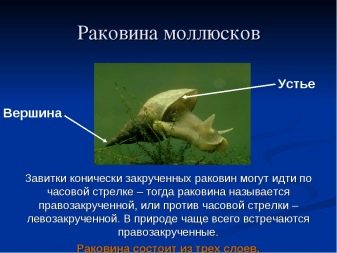
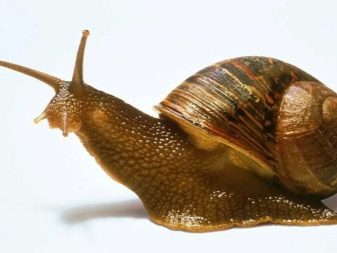
Breeding
Usually gastropods place gametes in water, where they subsequently develop. In this case, the average number of eggs reaches hundreds, and their maturation occurs within 21-28 days. Shellfish eggs can be translucent, as well as white, pink or green.
After the initial larval stage of the mollusk - trochophore, the future snail becomes a velger, after which metamorphosis occurs and a young individual forms.
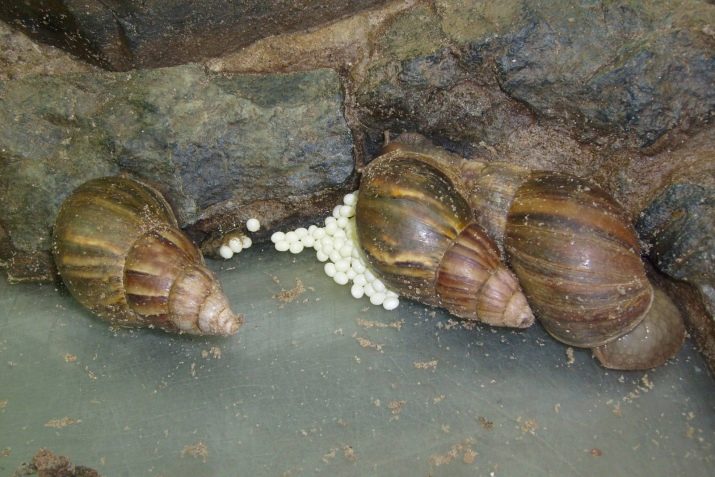
A number of marine species of mollusks follow larval development, but there are also small marine species that have a direct mode of development. Moreover, such a regime is normal for both freshwater and terrestrial groups. Embryonic development has been widely developed in many snails.
Gastropodia multiply upon maturity, laying eggs on stones or leaves of plants, individual species - on the planes of the ulitarii slightly higher than the water level. Initially, the eggs are translucent, but then they get a brownish tint, later on, young animals appear from them.
In favorable conditions, they multiply quickly and often, but because the process of reproduction needs to be controlled. It is advisable to be prepared for such an event and acquire a capacity of up to 30 liters with settled water. To obtain offspring, more than 3-4 individuals will not be needed; algae will not be superfluous in the aquarium. For feeding, you should choose boiled vegetables, bread or fish food.
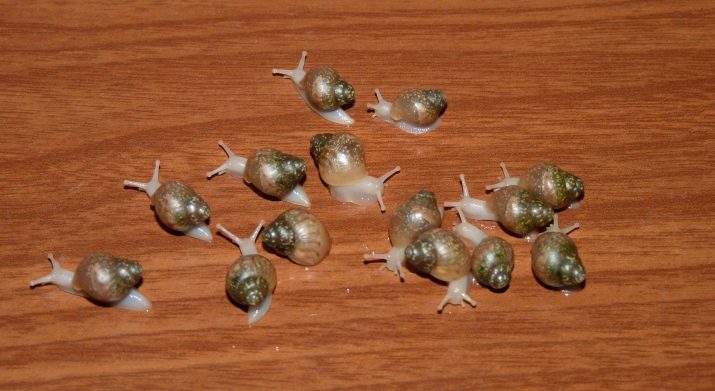
Review Reviews
Reviews of people containing snails at home, basically come down to the following aspects:
- snails do not cause any allergic reactions;
- they are absolutely safe;
- mollusks “sweet and tender”;
- these are extremely picky creatures;
- snails contribute to the development, especially in children, of a sense of beauty, love and respect for nature;
- communicating with snails, you understand how fragile the natural world is;
- contact with snails is useful for both children and adults, because of the ability to stimulate the relaxing properties of the observer and the possibility of massage with them.

Interesting Facts
Among gastropodia there are also very dangerous organisms. So, the conical snail (Conus geographus) is a poisonous resident of the tropics and subtropics. It was found off the Australian northern shores. Lives in living fragmented coral formations, in sandy areas of tidal zones. Less commonly found in depth.
The poison secreted by the bite of this animal can kill up to 15 people. Symptoms of poisoning: pain at the site of the bite, the sensations are much stronger than from a bee sting. After the gradual disappearance of the pain, the process of numbness occurs, dizziness is observed, the speech of the bitten becomes illegible, followed by paralysis of the respiratory tract.
Death occurs approximately 30 minutes after the bite, but such cases are rare. Known protection against snail venom does not exist. When a bite is used, pressure on the site of the bite, the process of immobilization and resuscitation. Perhaps this is the only option for the recommended treatment of a person bitten by this mollusk.

A miniature gastropody (Angustopila dominikae) was discovered in China. Scientists have found several small shells. There were no snails inside them, however, the size of the shells indicates that the body of the animal did not reach 1 mm, and the maximum specimen found was only 0.86 mm long.
Northern Australia is also home to the largest gastropod in the world - the Australian trumpeter (Syrinx aruanus). The record for the length of the carapace of the species is 91 cm, and its weight is 18 kg. The average size of a mature Australian trumpeter reaches 70 cm. This animal species is predatory, feeding on large polychaete worms. The popularity of the species has led to a reduction in its number, however, young individuals of small sizes are often splashed out by the sea wave during powerful storms.
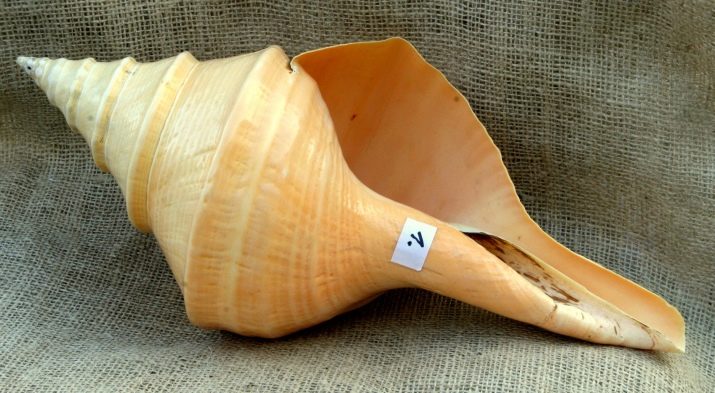
The pros and cons of snail content in the video below.
